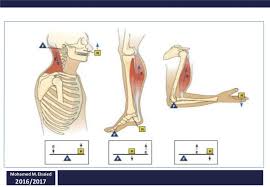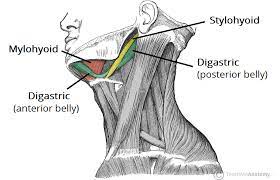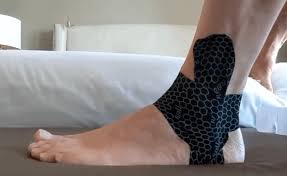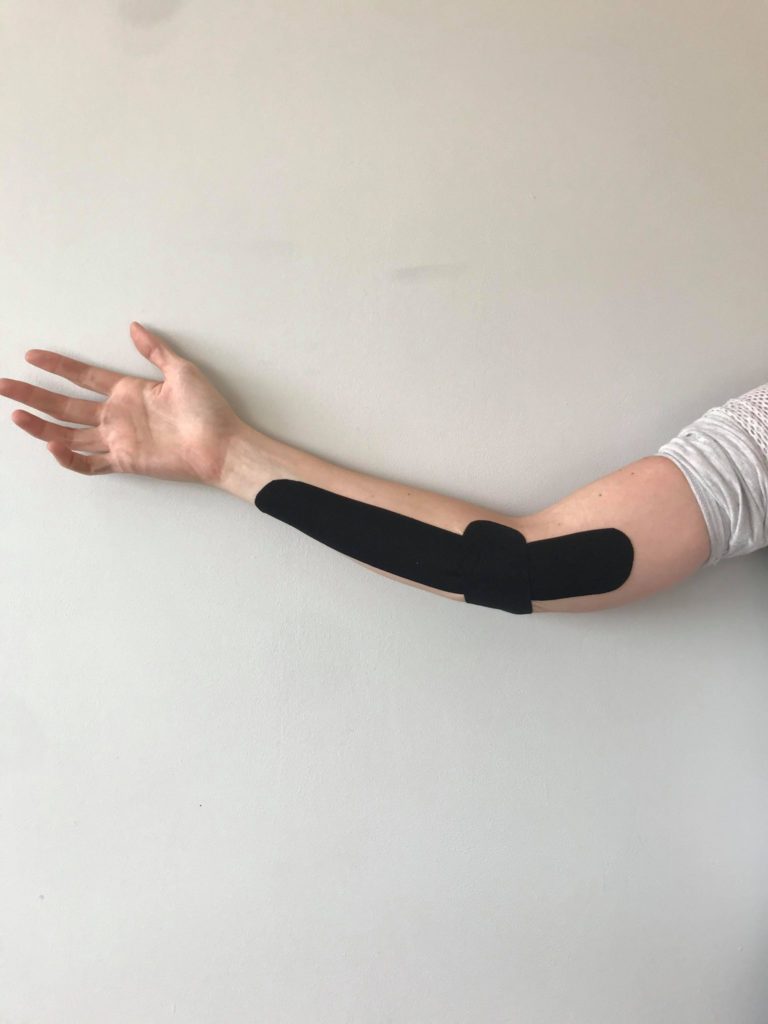Lever use in biomechanics
INTRODUCTION:
A lever is a rigid bar that moves on a fixed point called the fulcrum when a force is applied to it. Movement is made possible in the human body by lever systems which are formed by our muscles and joints working together. An understanding of the lever systems in the body helps us to understand how movement is possible.
*Levers in biomechanics
Muscles are attached to bones via tendons and the bones of the skeleton act as levers which muscles pull on to create movement. A lever system is made up of three parts, an effort, a load, and a fulcrum. In the human body, the effort is provided by the muscle (the muscles point of application/insertion), the load is the weight of the body and any additional resistance and the fulcrum is the joint itself.
*Functions of a lever system
Lever systems have two main functions; firstly to increase the resistance that a given force can move and secondly to increase the speed at which a body moves. In addition, different lever systems allow different ranges of movement. This means that some lever systems are effective at overcoming a resistance, whilst others are able to generate speed.
*Types of lever
There are three types of lever system in the body, each is determined by the relevant positions of the fulcrum (F), effort (E) and load (L). A useful way of determining the different types of lever system operating during a particular movement is to remember the following rhyme.
“For 1, 2, 3 think F, L, E” This rhyme helps us to identify the middle component of each lever system.
For a 1st class lever system, F is the middle component.
For a 2nd class lever system, L is the middle component.
For a third class lever system, E is the middle component.
3 Components to a Lever
1)Axis (pivot or fulcrum)
2)Resistive Load (weight)
3)Force (effort)
The location of these 3 components determines the mechanical advantage and the lever class. It’s important not to confuse this with moment and torque, which will be discussed in the next post.
LEVERS WORK TO CREATE MOVEMENT IN THE HUMAN BODY
Bones, ligaments, and muscles are the structures that form levers in the body to create human movement. In simple terms, a joint (where two or more bones join together) forms the axis (or fulcrum), and the muscles crossing the joint apply the force to move a weight or resistance. Levers are typically labeled as first class, second class, or third class. All three types are found in the body, but most levers in the human body are third class.
1)A first-class lever has the axis (fulcrum) located between the weight (resistance) and the force . An example of a first-class lever is a pair of pliers or scissors. First-class levers in the human body are rare. One example is the joint between the head and the first vertebra (the atlantooccipital joint) The weight (resistance) is the head, the axis is the joint, and the muscular action (force) come from any of the posterior muscles attaching to the skull, such as the trapezius.
- First-class LeverProduce balanced movements when axis is midway between force & resistance (e.g., seesaw).
- Produce speed & range of motion when axis is close to force, (triceps in elbow extension).
- Produce force motion when axis is close to resistance (crowbar).Seated dumbbell
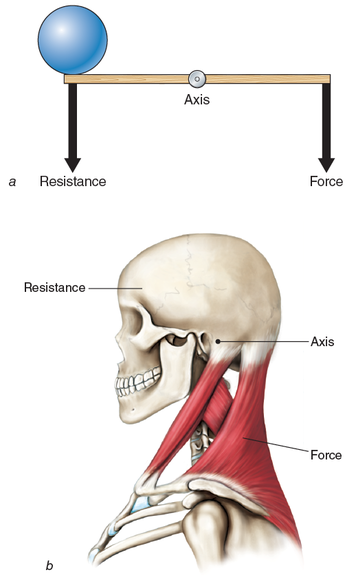
2)In a second-class lever, the weight (resistance) is located between the axis (fulcrum) and the force. The most obvious example is a wheelbarrow, where a weight is placed in the bed of the wheelbarrow between the wheel (axis) and the hands of the person using the wheelbarrow (force). In the human body, an example of a second-class lever is found in the lower leg when someone stands on tiptoes .The axis is formed by the metatarsophalangeal joints, the resistance is the weight of the body, and the force is applied to the calcaneus bone (heel) by the gastrocnemius and soleus muscles through the Achilles tendon.
- Produces force movements, since a large resistance can be moved by a relatively small force.Wheelbarrow
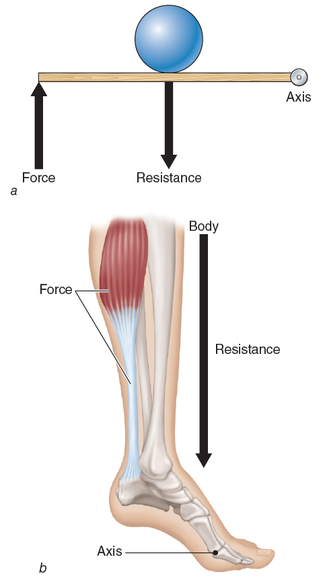
3)In a third-class lever, the most common in the human body, force is applied between the resistance (weight) and the axis (fulcrum) Picture someone using a shovel to pick up an object. The axis is the end of the handle where the person grips with one hand. The other hand, placed somewhere along the shaft of the handle, applies force. At the other end of the shovel (the bed), a resistance (weight) is present. There are numerous third-class levers in the human body; one example can be illustrated in the elbow joint .The joint is the axis (fulcrum). The resistance (weight) is the forearm, wrist, and hand. The force is the biceps muscle when the elbow is flexed.
- Produce speed & range of motion movements. Most common in human body.Requires a great deal of force to move even a small resistance.
- Shoveling – application of lifting force to a shovel handle with lower hand while upper hand on shovel handle serves as axis of rotation.
- Seated biceps curl.
- Paddling a boat
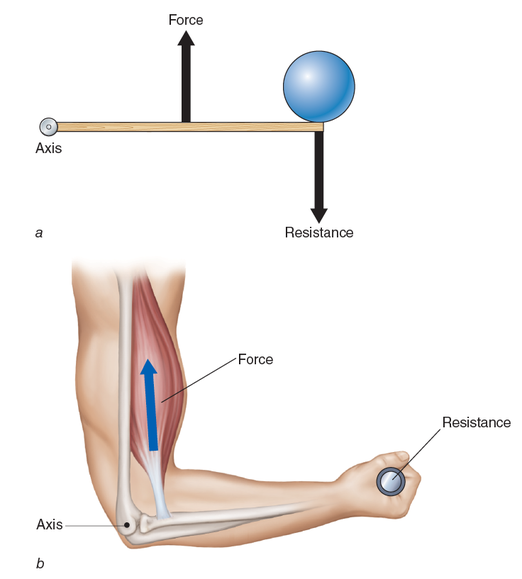
*Factors in use of anatomical levers
Anatomical leverage system can be used to gain a mechanical advantage.Improve simple or complex physical movements.Some habitually use human levers properly.Some develop habits of improperly using human levers.Torque and length of lever arms In humans, contracting muscle applies an eccentric force (not to be confused with eccentric contraction) to bone upon which it attaches & causes the bone to rotate about an axis at the joint. Amount of torque is determined by multiplying amount of force (force magnitude) by force arm. Force arm is perpendicular distance between location of force application & axis. ? That’s why shortest distance from axis of rotation to the line of action of the force and greater the distance of force arm, more torque produced by the force. Often, we purposely increase force arm length in order to increase torque so that we can more easily move a relatively large resistance (increasing our leverage).
Resistance arm – distance between the axis and the point of resistance application. Inverse relationship between length of the two lever arms between force & force arm between resistance & resistance arm. ?e longer the force arm, the less force required to move the lever if the resistance & resistance arm remain constant. Shortening the resistance arm allows a greater resistance to be moved if force & force arm remain constant. Proportional relationship between force components & resistance components. If either of the resistance components increases, there must be an increase in one or both of force components. Greater resistance or resistance arm requires greater force or longer force arm. Greater force or force arm allows a greater amount of resistance
Mechanical advantage and disadvantage of levers
This means that the lever can overcome a large load with relatively little effort. Mechanical advantage is very useful for joints which are weight bearing as they have to overcome the weight of the whole body.
MA FORMULA = effort arm ÷ resistance arm
The third type of lever has the disadvantage of reducing the force exerted on the system. The force is between the load and the fulcrum. While it does create a mechanical advantage, it reduces the overall force, leading to inefficiency in the system.
Levers: Power Versus Speed
A lever allows a given effort to move a heavier load, or to move a load farther and faster, than it otherwise could. If the load is close to the fulcrum and the effort is applied far from the fulcrum, a small effort exerted over a relatively large distance can move a large load over a small distance. Such a lever is said to operate at a mechanical advantage and is commonly called a power lever. For example, a person can lift a car with a power lever or jack. The car moves up only a small distance with each downward push of the jack handle, but relatively little muscle effort is needed.
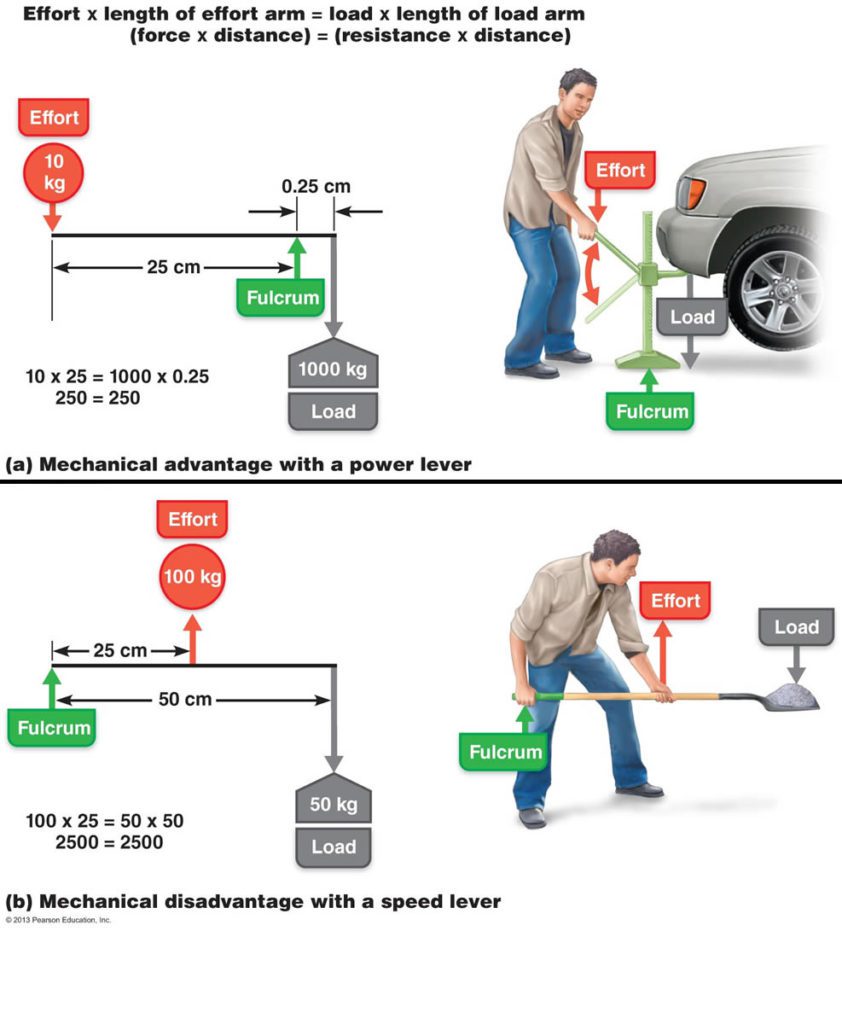
If, on the other hand, the load is far from the fulcrum and the effort is applied near the fulcrum, the force exerted by the muscle must be greater than the load to be moved or supported. This lever system is a speed lever and operates at a mechanical disadvantage. Speed levers are useful because they allow a load to be moved rapidly or a large distance with a wide range of motion. Using a shovel is an example. As you can see, small differences in the site of a muscle’s insertion can translate into large differences in the amount of force a muscle must generate to move a given load or resistance.
Regardless of type, all levers follow the same basic principle:
Effort farther than load from fulcrum = lever operates at a mechanical advantage
Effort nearer than load to fulcrum = lever operates at a mechanical disadvantage

